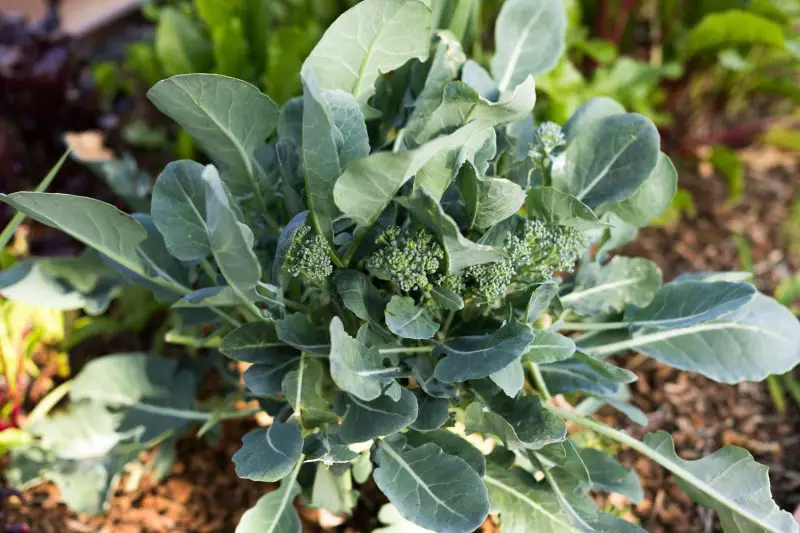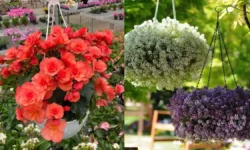Broccoli is one of the most nutritious and popular vegetables to grow in home gardens, but achieving healthy, abundant heads often depends on proper companion planting. The concept of growing specific plants alongside broccoli is not just about maximizing space; it is a proven gardening method that enhances soil fertility, deters pests, and improves overall plant health. By understanding which plants thrive near broccoli, you can create a more balanced ecosystem in your garden and enjoy higher yields with less effort.
The secret lies in choosing companion plants that complement broccoli’s growing habits. Since broccoli belongs to the brassica family, it requires nutrient-rich soil, steady moisture, and plenty of sunlight. Certain plants help provide these needs naturally, while others protect broccoli from common pests such as aphids, cabbage worms, and flea beetles. When paired correctly, companion plants can also improve flavor and accelerate growth.
Table of Contents
Understanding Companion Planting for Broccoli

Companion planting is an ancient agricultural technique that involves growing mutually beneficial plants near each other. For broccoli, this technique plays a critical role because the vegetable is a heavy feeder, absorbing large amounts of nitrogen and other nutrients from the soil. Without proper soil balance, broccoli may develop small, bitter heads or become prone to disease.
Another important aspect of companion planting is pest control. Broccoli plants are highly attractive to caterpillars, cabbage worms, and aphids. Companion plants can repel or distract these pests, reducing the need for chemical pesticides. Moreover, some plants attract beneficial insects like ladybugs and parasitic wasps, which naturally keep harmful pests under control.
Finally, companion planting improves soil health. Certain plants fix nitrogen, loosen compacted soil, or act as living mulch, conserving moisture and reducing weed competition. All these factors make companion planting essential for a thriving broccoli crop.
Top Broccoli Companion Plants for a Healthy Garden
When selecting broccoli companion plants, focus on those that enrich the soil, repel pests, and thrive in similar growing conditions. The following plants are considered the best companions for broccoli, and when grown together, they create a harmonious and productive garden environment.
Aromatic Herbs as Broccoli Companions
Herbs are among the best companions for broccoli due to their pest-repelling properties. Strong-scented herbs such as dill, rosemary, and sage mask the scent of broccoli, making it harder for pests to locate. Dill, in particular, attracts beneficial insects like wasps and ladybugs that prey on aphids and caterpillars. Rosemary and sage deter cabbage moths, which are notorious for laying eggs on broccoli leaves.
Additionally, herbs do not compete heavily for nutrients, making them excellent neighbors for nutrient-demanding plants like broccoli. Most herbs prefer well-drained soil and moderate watering, which is compatible with broccoli’s growing requirements. The presence of these herbs can also improve air circulation between plants, reducing the chances of fungal diseases.
Leafy Greens as Broccoli Neighbors
Leafy greens such as spinach and lettuce are ideal broccoli companions because they have shallow roots and grow quickly, filling empty spaces between broccoli plants. Since they mature faster, they can be harvested before broccoli reaches full size, making efficient use of garden space.
Another benefit of leafy greens is their role in weed suppression. Their broad leaves act as a living mulch, shading the soil and preventing weeds from competing with broccoli for nutrients. Moreover, these greens thrive in the same cool weather conditions as broccoli, making them perfect for early spring or fall planting.
Because they require less nitrogen, they do not compete with broccoli for essential nutrients, allowing broccoli to absorb more nutrients from the soil. This complementary nutrient usage results in healthier, larger broccoli heads.
Root Vegetables for Soil Improvement
Root vegetables such as beets and radishes make excellent companions for broccoli because they help loosen compacted soil. Their deep roots penetrate the soil, improving drainage and aeration, which benefits broccoli’s shallow root system. This natural soil conditioning enhances nutrient absorption and promotes stronger, healthier plants.
Radishes are particularly beneficial because they grow quickly and can act as a trap crop for pests. Flea beetles, which often attack young broccoli seedlings, are more attracted to radish leaves. By planting radishes nearby, you can divert these pests away from broccoli, reducing leaf damage during the critical early growth stage.
Beets, on the other hand, enrich the soil with organic matter as they grow. Once harvested, leftover beet foliage can be composted directly into the soil, further improving soil structure for future broccoli plantings.
Alliums as Natural Pest Deterrents
Alliums such as onions, garlic, and shallots are natural pest deterrents and make excellent broccoli companions. Their strong scent confuses pests, preventing them from locating broccoli plants. Garlic, in particular, is effective against aphids, cabbage worms, and Japanese beetles.
Another reason to plant alliums near broccoli is their minimal nutrient competition. Alliums have narrow leaves and compact root systems, so they occupy different soil levels compared to broccoli. This allows both plants to thrive without depleting each other’s nutrient supply.
Furthermore, onions and garlic can help reduce the spread of fungal diseases in the garden by releasing sulfur compounds into the soil. These natural antifungal properties create a healthier growing environment for broccoli, especially in humid climates where fungal infections are common.
Beneficial Flowers Near Broccoli
Flowers may not seem like an obvious choice for companion planting, but they play a vital role in attracting beneficial insects. Marigolds are one of the best flowers to grow near broccoli because they repel nematodes and aphids with their natural chemicals. Their bright blooms also attract pollinators, which can benefit other crops in the garden.
Nasturtiums are another excellent choice, acting as a sacrificial trap crop for aphids and caterpillars. Pests are more likely to feed on nasturtium leaves, leaving broccoli relatively undamaged. Nasturtiums also spread quickly, covering the soil and helping to retain moisture while reducing weed growth.
In addition, flowering plants create a more diverse and visually appealing garden ecosystem, which promotes overall plant health and resilience. A garden rich in flowers encourages biodiversity, making it less susceptible to pest outbreaks.
Plants to Avoid Growing Near Broccoli
While many plants benefit broccoli, some should be avoided due to nutrient competition or negative interactions. Corn and tomatoes are heavy feeders that compete with broccoli for nitrogen, which can stunt broccoli’s growth. Strawberries are also not ideal companions because they attract pests that target broccoli, including aphids and slugs.
Another group of plants to avoid is other brassicas such as cauliflower, cabbage, and Brussels sprouts. Although they share similar growing conditions, planting too many brassicas together can deplete soil nutrients quickly and attract large populations of pests that specialize in feeding on cruciferous vegetables.
Avoiding these incompatible plants ensures that broccoli receives the nutrients and pest protection it needs to thrive.
Tips for Successful Broccoli Companion Planting
Successful companion planting requires thoughtful planning and observation. Start by spacing plants properly to allow good air circulation and reduce disease risks. Ensure that companion plants have similar sunlight and watering needs to avoid stressing any plant.
Rotating crops each season is also important to prevent soil depletion and reduce pest buildup. Incorporating organic compost before planting improves soil fertility and helps companion plants thrive together. Mulching around broccoli and its companions conserves soil moisture and suppresses weeds, contributing to healthier growth.
Finally, observe your garden regularly to identify pest activity or signs of nutrient deficiency. Adjust companion plant combinations as needed based on what works best in your specific garden environment.
FAQs About Broccoli Companion Plants
What Are the Best Companion Plants for Broccoli?
The best companion plants for broccoli include aromatic herbs like dill and rosemary, leafy greens such as spinach and lettuce, root vegetables like radishes and beets, alliums including garlic and onions, and flowers like marigolds and nasturtiums. These plants help repel pests, improve soil health, and enhance broccoli growth.
Can Broccoli Be Planted Next to Tomatoes?
It is not recommended to plant broccoli next to tomatoes. Both are heavy feeders that compete for the same nutrients, particularly nitrogen. This competition can stunt broccoli growth and reduce tomato yields, making them poor companions in the same garden bed.
Why Are Flowers Good Companions for Broccoli?
Flowers such as marigolds and nasturtiums attract beneficial insects and act as trap crops for pests. Marigolds repel nematodes and aphids, while nasturtiums lure caterpillars and aphids away from broccoli. They also help maintain soil moisture and create a diverse garden ecosystem.
Can Broccoli Be Grown with Other Brassicas?
Although broccoli shares similar growing conditions with other brassicas like cabbage and cauliflower, it is better to avoid planting them together. Growing too many brassicas in the same space can quickly deplete soil nutrients and attract large numbers of pests that target cruciferous vegetables.
How Can Companion Planting Improve Broccoli Yields?
Companion planting enhances broccoli yields by improving soil fertility, reducing pest infestations, and creating a balanced growing environment. Plants like radishes loosen the soil, herbs repel insects, and flowers attract pollinators and beneficial insects, all contributing to healthier and larger broccoli heads.
Conclusion
Companion planting is an effective and natural way to improve broccoli growth, enhance soil health, and reduce pest problems. By choosing the right companions, such as aromatic herbs, leafy greens, root vegetables, alliums, and beneficial flowers, you can create a thriving and productive garden ecosystem. Understanding which plants to avoid is equally important to prevent competition and pest attraction.
When implemented correctly, companion planting not only boosts broccoli yields but also contributes to a healthier, more sustainable garden. With the right plant partnerships, you can enjoy vibrant, pest-resistant broccoli and a flourishing vegetable garden season after season.






